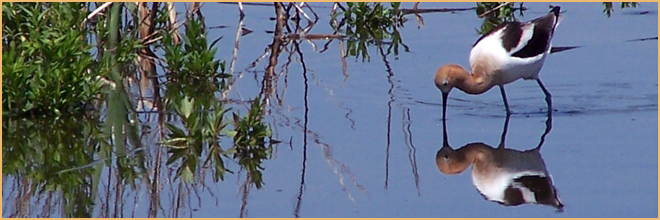Government Grants
Business Grants
Home Owner Programs
Federal Programs
About Us
F23AS00307 Aquatic Invasive Grass Research
The US Fish and Wildlife Service (Service) has received funding from Congress for the sole purpose of managing and improving the understanding of submerged aquatic invasive grasses with focus on Hydrilla, Milfoil, and Elodea.
The Alaska Region is managing $250,000 of these funds in FY2 3. The
Service is seeking proposals that address information gaps to improve the success of the Alaska Invasive Species Partnership to prevent submerged aquatic invasive grasses from becoming established or further spread in Alaska.
The program encourages collaboratives proposals that address knowledge gaps associated with the following general categories of priority research needs:Vector and pathway assessment.
Research focused on:
determining lethal desiccation rates; expanding on seaplane and watercraft vector analyses; and, conducting social science analyses to understand how to improve behavior change to prevent further spread.Prevention and surveillance prioritization and tool development.
Research focused on:
what habitat conditions favor establishment or causes the invasive plant to die off after a certain period; identify priority waterbodies based on their ecological services considering current and future climate conditions; and, develop and or assess feasibility of non-traditional (e.g., rake throws) early detection surveys tools (e.g., canine detection, aerial/satellite imagery, eDNA).Impacts of these aquatic invasive grasses and various management techniques on native fish and wildlife and their habitats.
Research focused on:
understanding how aquatic biota recover after a waterbody has been treated with diquat and or fluridone; assess how using these herbicides to treat Elodea, Milfoil, or Hydrilla may affect non-target species; and, improve the understanding of the persistence of fluridone in various aquatic environments of Alaska.Develop innovative control techniques for remote and road accessible waterbodies.
Research focused on the design of effective, low cost, eradication and control application equipment.
The Alaska Region is managing $250,000 of these funds in FY2 3. The
Service is seeking proposals that address information gaps to improve the success of the Alaska Invasive Species Partnership to prevent submerged aquatic invasive grasses from becoming established or further spread in Alaska.
The program encourages collaboratives proposals that address knowledge gaps associated with the following general categories of priority research needs:Vector and pathway assessment.
Research focused on:
determining lethal desiccation rates; expanding on seaplane and watercraft vector analyses; and, conducting social science analyses to understand how to improve behavior change to prevent further spread.Prevention and surveillance prioritization and tool development.
Research focused on:
what habitat conditions favor establishment or causes the invasive plant to die off after a certain period; identify priority waterbodies based on their ecological services considering current and future climate conditions; and, develop and or assess feasibility of non-traditional (e.g., rake throws) early detection surveys tools (e.g., canine detection, aerial/satellite imagery, eDNA).Impacts of these aquatic invasive grasses and various management techniques on native fish and wildlife and their habitats.
Research focused on:
understanding how aquatic biota recover after a waterbody has been treated with diquat and or fluridone; assess how using these herbicides to treat Elodea, Milfoil, or Hydrilla may affect non-target species; and, improve the understanding of the persistence of fluridone in various aquatic environments of Alaska.Develop innovative control techniques for remote and road accessible waterbodies.
Research focused on the design of effective, low cost, eradication and control application equipment.
Who's Eligible
Relevant Nonprofit Program Categories
Obtain Full Opportunity Text:
https://grants.nih.gov/grants/guide/rfa-files/RFA-NS-24-004.html
Additional Information of Eligibility:
Other Eligible Applicants include the following: Alaska Native and Native Hawaiian Serving Institutions; Asian American Native American Pacific Islander Serving Institutions (AANAPISISs); Eligible Agencies of the Federal Government; Faith-based or Community-based Organizations; Hispanic-serving Institutions; Historically Black Colleges and Universities (HBCUs); Indian/Native American Tribal Governments (Other than Federally Recognized); Non-domestic (non-U.S.) Entities (Foreign Organizations); Regional Organizations; Tribally Controlled Colleges and Universities (TCCUs) ; U. S. Territory or Possession.
Full Opportunity Web Address:
http://grants.nih.gov/grants/guide/rfa-files/RFA-NS-24-004.html
Contact:
Agency Email Description:
Regional Invasive Species Program Coordinator
Agency Email:
Date Posted:
2023-03-16
Application Due Date:
Archive Date:
2023-06-30
Social Entrepreneurship
Spotlight
Why People Buy from Social Enterprises?

The Guardian has compiled a list of responses to its latest open thread, and has announced the winner of the social enterprise gift hamper packed with presents.

